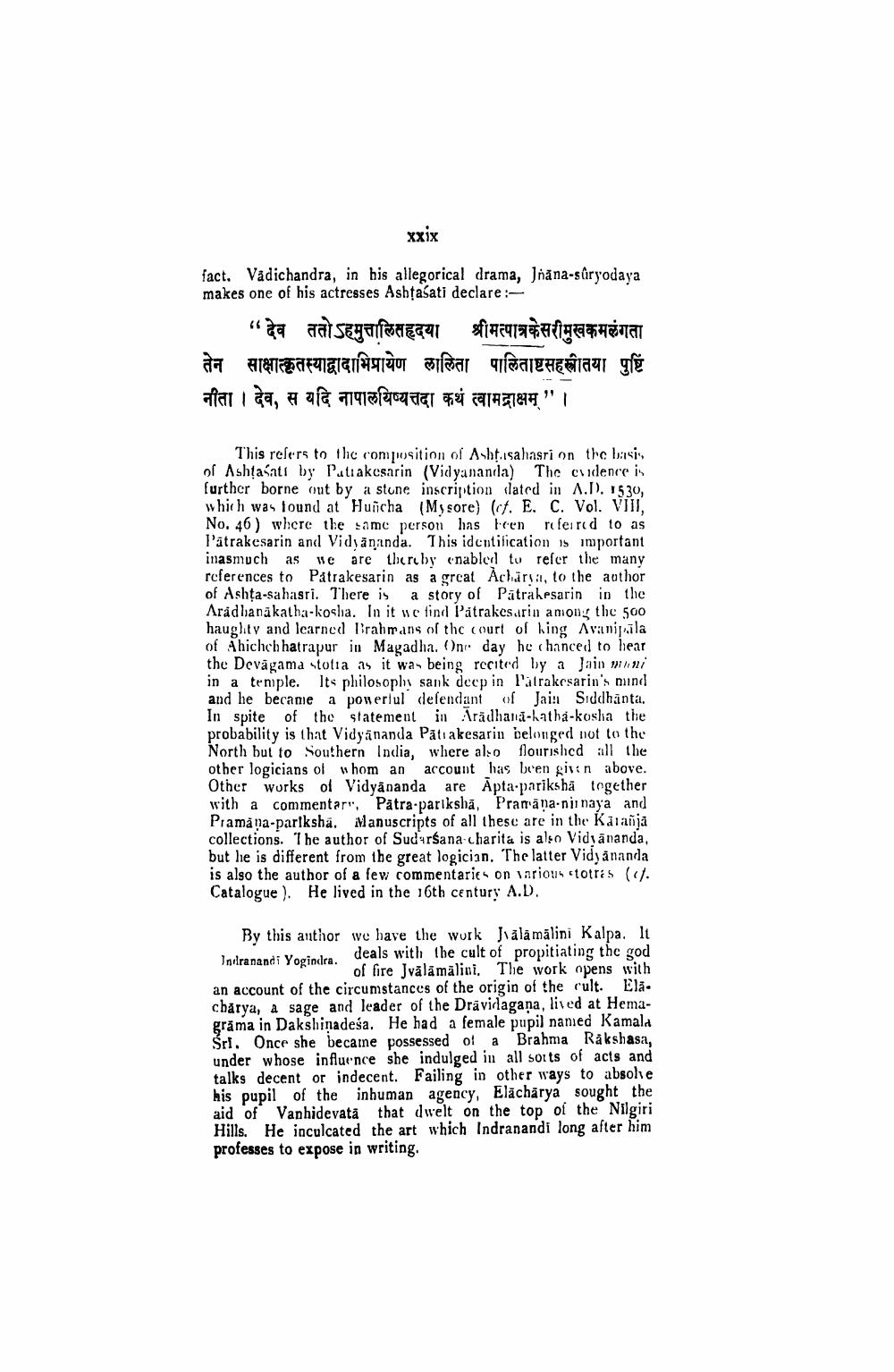________________
xxix
fact. Vadichandra, in his allegorical drama, Jnana-suryodaya makes one of his actresses Ashtaśati declare:
" देव ततोऽहमुत्तालितहृदया श्रीमत्पात्र के सरीमुखकमलंगता तेन साक्षात्कृतस्याद्वादाभिप्रायेण लालिता पालिताष्टसहस्त्रीतया पुष्टि नीता । देव, स यदि नापालयिष्यत्तदा कथं त्वामद्राक्षम् " ।
This refers to the composition of Ashtasahasri on the basis of Ashtasati by Pattakesarin (Vidyananda) The evidence is further borne out by a stone inscription dated in A.D). 1530, which was found at Huncha (Mysore) (cf. E. C. Vol. VIII, No. 46) where the same person has been referred to as Patrakesarin and Vidyananda. This identification is important inasmuch as We are thereby enabled to refer the many references to Patrakesarin as a great Acharya, to the author of Ashta-sahasri. There is a story of Patrakesarin in the Aradhanakatha-kosha. In it we find Patrakesarin among the 500 haughty and learned Brahmans of the court of king Avanipala of Ahichchhatrapur in Magadha. One day he chanced to hear the Devagama stotta as it was being recited by a Jain muni in a temple. Its philosophy sank deep in Patrakesarin's mund and he became a powerful defendant of Jain Siddhanta. In spite of the statement in Aradhana-katha-kosha the probability is that Vidyananda Pati akesarin belonged not to the North but to Southern India, where also flourished all the other logicians of whom an account has been given above. Other works of Vidyananda are Apta-pariksha together with a commentar", Patra-pariksha, Pramana-ninaya and Pramana-partksha. Manuscripts of all these are in the Karanja collections. The author of Sudarsana charita is also Vidyananda, but he is different from the great logician. The latter Vidyananda is also the author of a few commentaries on various stotras (7. Catalogue). He lived in the 16th century A.D.
By this author we have the work Jalamalini Kalpa. It deals with the cult of propitiating the god
Indranandi Yogindra. of fire Jvälämälini. The work opens with
Ela
an account of the circumstances of the origin of the cult. charya, a sage and leader of the Dravidagana, lived at Hemagrama in Dakshinadeśa. He had a female pupil named Kamala Srl. Once she became possessed of a Brahma Rakshasa, under whose influence she indulged in all sorts of acts and talks decent or indecent. Failing in other ways to absolve his pupil of the inhuman agency, Elacharya sought the aid of Vanhidevatā that dwelt on the top of the Nilgiri Hills. He inculcated the art which Indranandi long after him professes to expose in writing.




